El clima: A pesar de la negación de la realidad de Biden que prioriza las ganancias sobre la vida de las personas, la pandemia de COVID está lejos de terminar.
Como hemos visto durante todo el verano, más del 99 por ciento de la población vive en áreas con una transmisión de COVID sustancial o más alta. Los dos niveles de mapa más altos aquí muestran cuán altos son los niveles de casos, en 100-199 y 200-299 casos por 100,000 respectivamente.

Sobre variantes: La diversidad de variantes es cada vez más alta en los EE. UU. (y en muchos otros países), como Profesor Bassani dice..
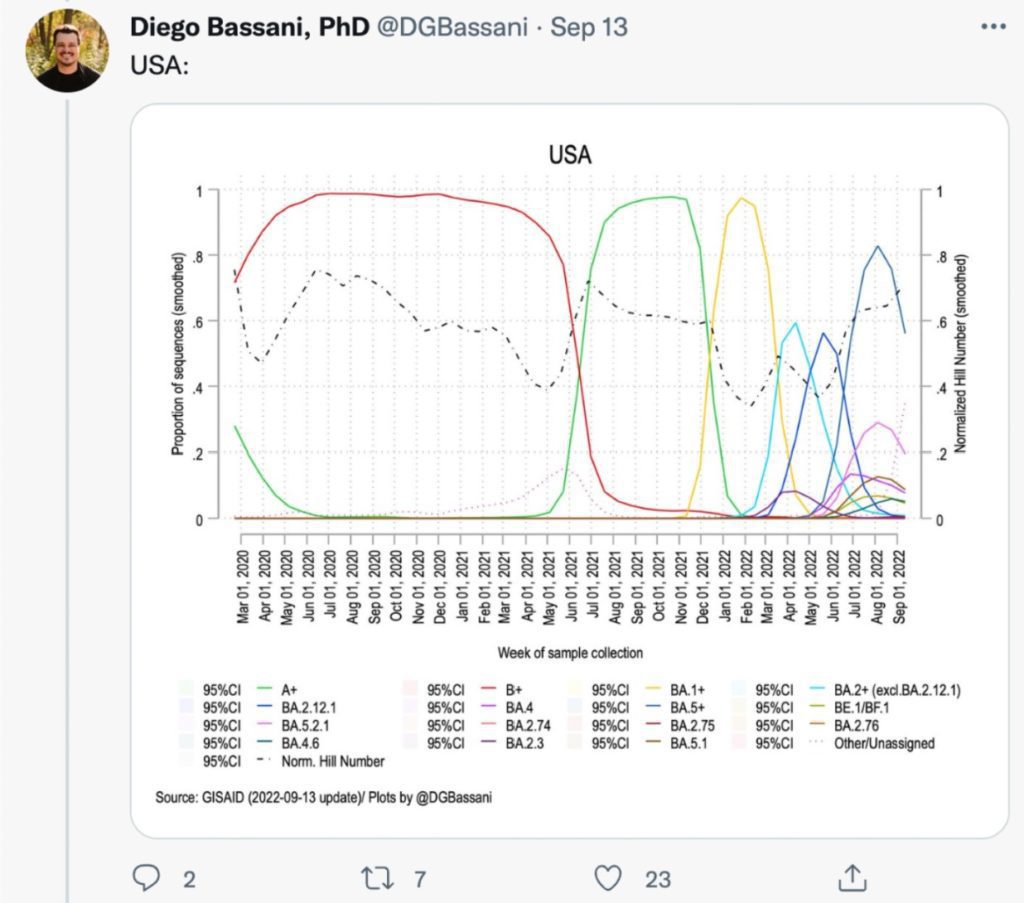
Nosotros continuamos a ver disminuciones en la proporción de casos debido a BA.5, aunque sigue siendo la mayoría (85%). Otras 3 variantes están ganando terreno: BA.4.6 ahora representa el 10 % de los casos, particularmente en las regiones de Central Plains, sureste y noreste...
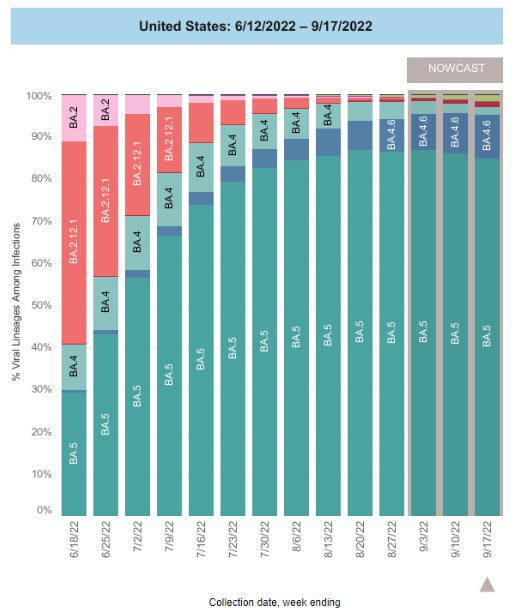
BF.7 (verde lima) está en 1.7% y es el más alto en el noreste; y BA.2.75/BA.2.75.2 (rojo oscuro) es del 1,3 %, con porcentajes ligeramente más altos en la costa oeste y los Grandes Lagos.
Cada vez es más difícil hacer un seguimiento de estas variantes y sus subvariantes. Dr Topol provides a nice summary. BA2.75 (Centauro) había causado un aumento en la India, pero no ha sido predominante en áreas que primero tenían BA4/5. No está claro qué hará el nuevo BA2.75.2.

La existencia de tantos variantes es preocupante por muchas razones. Significa que el virus tiene muchas posibilidades de evolucionar. Es más difícil estudiar la gravedad relativa, la inmunidad y la transmisibilidad de tantas variantes. Y aumenta las posibilidades de otra oleada.
Una preimpresión de Dinamarca muestra que las reinfecciones se han vuelto más comunes con las variantes más nuevas. Pocas personas (en cuadrados grises) se volvieron a infectar antes de Omicron. Sin embargo, Omicron pudo volver a infectar fácilmente a las personas. La segunda figura muestra que es posible la reinfección entre las cepas de Omicron.
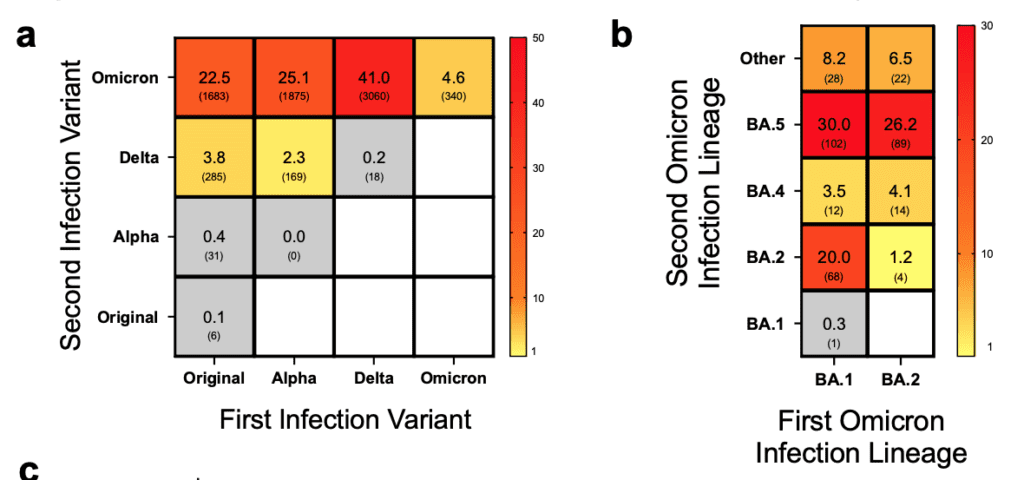
Monitoreo de aguas residuales: Datos nacionales de aguas residuales ha estado fluctuando después de un breve descenso. Todavía está en niveles relativamente altos. A nivel regional, el aumento proviene principalmente del noreste.
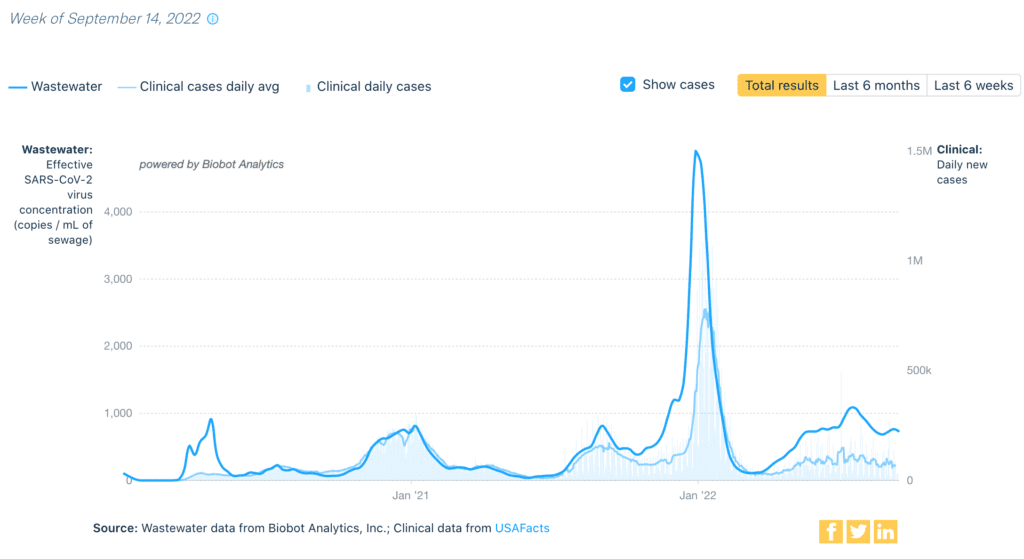
Hospitalizaciones: En general hospitalizaciones siguen bajando, lo cual es una excelente noticia. Entre los niños, las hospitalizaciones están comenzando a disminuir, pero siguen siendo bastante altas en comparación con la mayor parte de la pandemia. Nuestros niños merecen mejores protecciones.
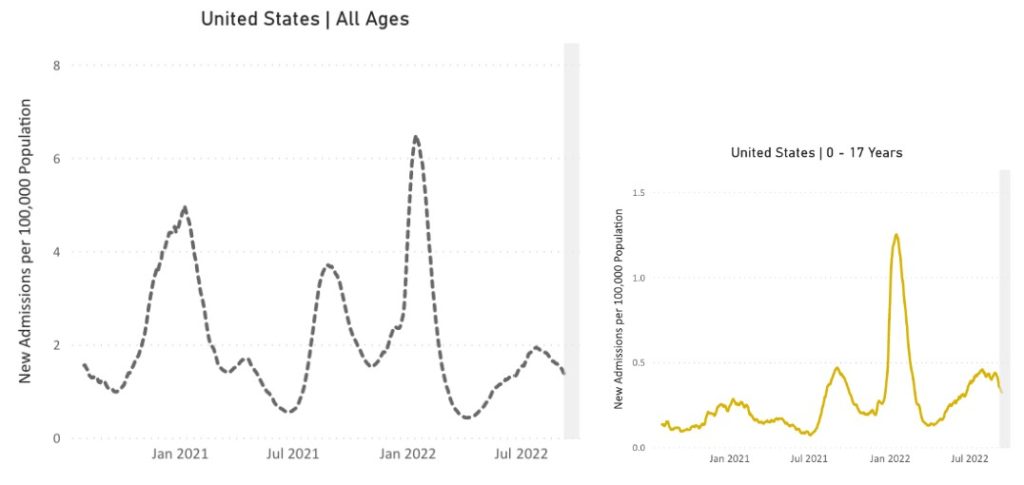
Fallecidos: De Septiembre 1 hasta el 7, 2,503 personas han fallecido por COVID a nivel nacional.
Sobre COVID largo: A Encuesta de población de 3000 adultos de EE. UU. encontró que el 7% de todos los encuestados informaron Long COVID (usando la definición del Reino Unido). El COVID prolongada fue menos común, pero no eliminada, entre los que recibieron el impulso.
“El COVID prolongada es ahora el tercer trastorno neurológico más importante del país” la Academia Americana de Neurología declaró en julio. La gravedad y el efecto duradero en el cerebro pueden no estar relacionados: las personas con síntomas similares a los del resfriado están desarrollando problemas cognitivos, ansiedad, depresión y sueño.
Pronóstico: Los nuevos refuerzos actualizados finalmente coinciden con la variedad actual. Sin embargo, la aceptación del refuerzo ha sido baja en los EE. UU.: menos de la mitad de la población tiene siquiera un refuerzo. ¡El enmascaramiento de alta calidad, la buena ventilación, el acceso a las pruebas y la licencia por enfermedad pagada son importantes para mantenerse saludables!

¿Está buscando una manera fácil y efectiva de limpiar su aire? Las cajas de Corsi-Rosenthal superan a muchos filtros de aire disponibles y trabajan en hogares, escuelas y oficinas. ¡Aprenda más sobre cómo construir uno en cleanaircrew.org!
¡Acciones a tomar! Los activistas de Long COVID exigen una mejor investigación hoy, 19 de septiembre. Obtenga más información y participe en: https://millionsmissing.meaction.net/protest2022/
Notes: 1) The numbers in this report were current as of 9/16/22. The CDC updates data frequently as it receives refreshed information. Today’s numbers may be slightly different from the data here. 2) Check out the links throughout & see our website for more! https://peoplescdc.org.